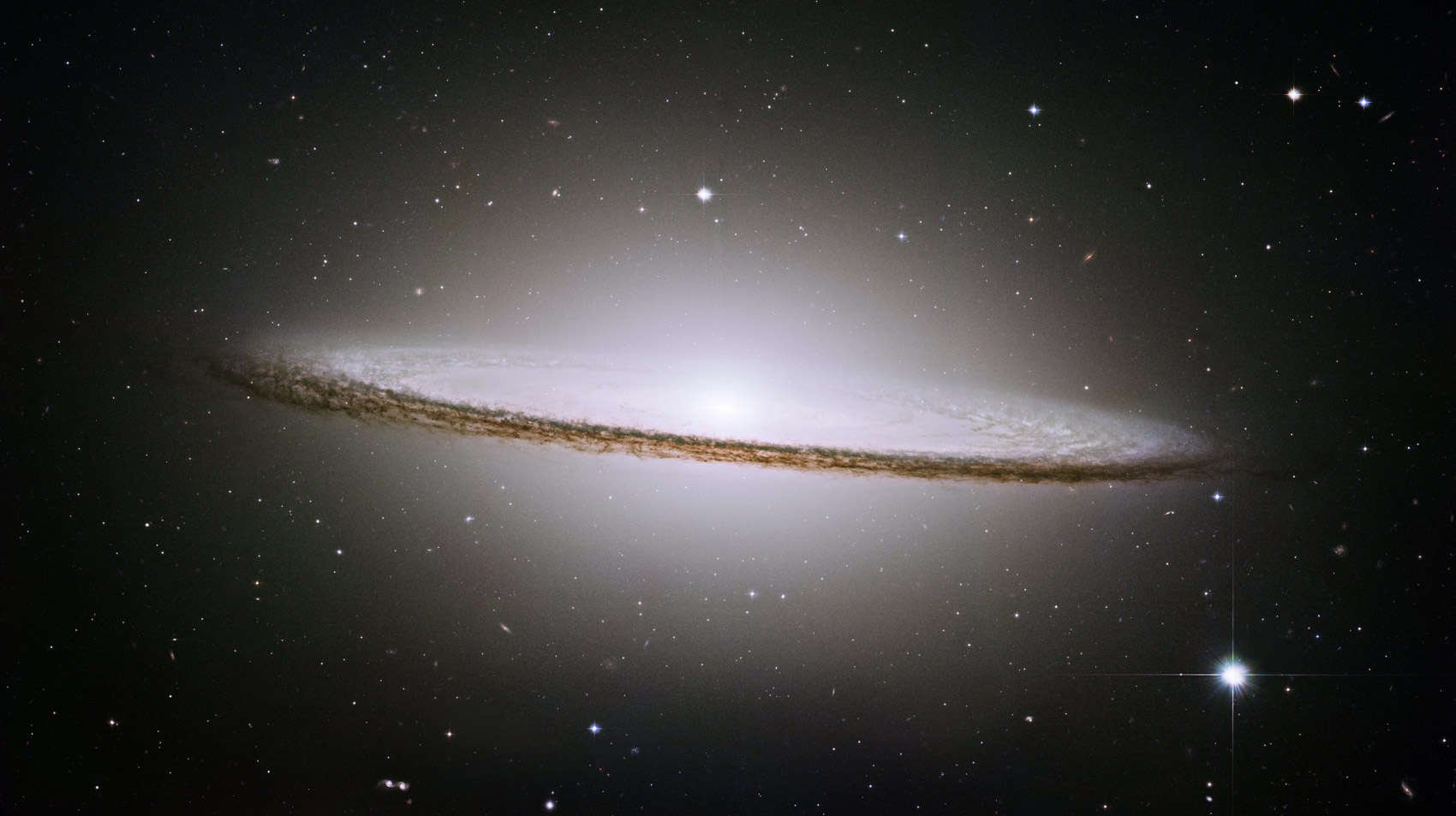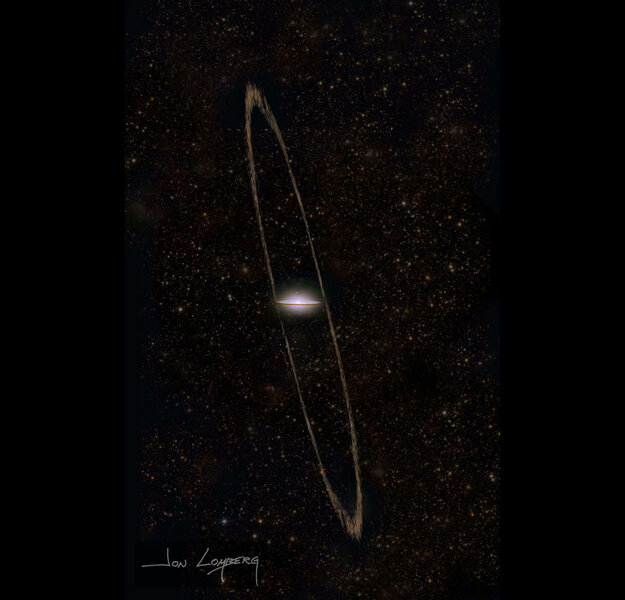Create a free profile to get unlimited access to exclusive videos, sweepstakes, and more!
An ancient remnant of a galactic collision encircles the Sombrero Galaxy

Astronomers have found a huge ring structure looping around the nearby (and absolutely spectacular) galaxy M104, also known as the Sombrero Galaxy. It’s likely elliptical, encircling the entire galaxy and something like 370,000 light years along its long axis.
This ring is almost certainly made up of stars, and is what’s called a stellar stream, the remnants of a smaller galaxy eaten by a bigger one. It’s known that the Sombrero suffered a massive collision more than 3.5 billion years ago, but it turns out this ring is unrelated to that… but can be used to help understand that earlier collision.
This is very cool science, involves some rather surprising equipment, and also gives me an excuse to show you a Hubble image of the Sombrero which, honestly, doesn’t take a lot of prompting, because I love this galaxy a lot.
Now you will too. Behold:
Oh yeah.
This Hubble image shows what appears to be a nearly edge-on spiral galaxy with a prominent ring of dust aligned with its disk, but looks are deceiving. When examined in detail, it turns out that the Sombrero looks as much like an elliptical galaxy — a spheroidal kind of galaxy that can be ball-shaped or elongated like an American football — in its central regions, but more like a flat disk galaxy in its outer part.
This is why astronomers think it had a major collision with a decently big galaxy. It likely started as a huge elliptical with a staggering mass of well over 10 trillion times that of the Sun (making it far larger than the Milky Way), and, typical of ellipticals, was nearly all stars with very little gas and dust. Then, at some point in the past but probably more than 3.5 billion years ago, it collided with a smaller but still substantial disk galaxy, one rich in gas and dust. This collision formed the obvious and jaw-droppingly gorgeous ring of dust around the central elliptical part.
We know that in such collisions there can be huge structures flung out into space, called tidal tails, parts of both galaxies pulled out by the gravity of the other. So a team of astronomers decided to take a look. This is difficult to do, as these features can be very large, very faint, and the glow of the much brighter galaxy in the center can overwhelm the observations. But a project called the Stellar Tidal Stream Survey was made for this. Literally: It uses smaller telescopes (with wide fields of view) to observe nearby galaxies looking for such structures.
They teamed up with astrophotographer Manuel Jiménez, who used an 18-centimeter robotic telescope to make the observations. Let’s pause for a moment and take that in: 18 cm is small. I have a telescope of my own and it has a 20 cm mirror, so the one used for the Sombrero observations isn’t even as big! However, size isn’t everything: It’s a very fine piece of equipment that used a very sensitive camera on it, and is located in a very dark site, allowing for such tricky and deep images to be made.
The resulting image (of about 5 hours of total exposure) had to be heavily processed to remove the effects of the glow of the galaxy itself and the many stars in the foreground, but the result very clearly shows a ring structure around the galaxy (and confirms an earlier observation in 1997 showing the parts of the ring extending furthest from the galaxy from our point of view, though at the time it wasn’t clear it as a ring). Assuming this was from a collision, the team modeled various types of merger events to see what could best reproduce what was seen. This video shows the astonishing image and the results of their models:
In the video red stars are moving away from you and blue toward you. At the end the entire model is rotated to better visualize the three-dimensional structure, which is well over 370,000 light years across (our Milky Way is a third that size).
But right away there are problems. The collision they find formed this ring doesn’t match the collision that formed the huge dust disk in the main part of the galaxy.
For one thing, their ring would’ve formed 3 billion years ago, and the big collision was more than 3.5 billion years ago. Also, the mass of the ring is too small; it must have been from a much smaller galaxy, probably a dwarf.
The only conclusion to reach is that this formed in a separate event from the one that made the Sombrero half elliptical/half disk. That’s a little irritating, since the original hope was that this structure would astronomers understand the big event better.
… but hang on a sec. In a way it does. The ring is immense but somewhat delicate; a big collision occurring after it formed would eradicate it. This means it definitely formed after the bigger event, or else it wouldn’t be there at all. That’s convenient, since it’s a) consistent with the bigger collision happening at least 3.5 billion years ago, and 2) creates a timeline of events. If one collision can be better understood it helps us understand the other one, too.
Unfortunately the difficulty of the observations makes it hard to get more information. However, the Sombrero is orbited by a large number of globular clusters, tightly packed collections of up to a million stars that orbit well outside the main galaxy. Their orbits are affected by collisions, and in fact there appear to be two separate populations of these clusters around the galaxy, one from the original elliptical and one from the gas-rich galaxy that was eaten. Studying them should reveal more information, possibly about both collisions.
The Sombrero is just a staggeringly gorgeous galaxy, but it also has a rich history we are just beginning to understand. That, plus the fact that we need observation by machines like Hubble as well as much smaller amateur-sized 'scopes, just endears it to me even more.
















